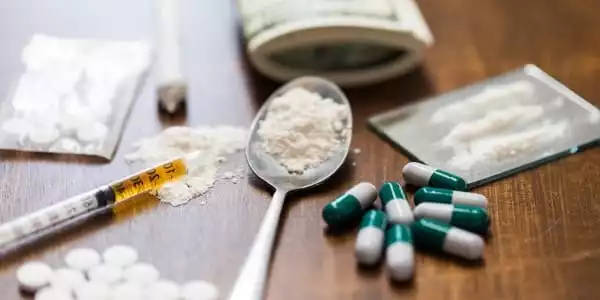According to a new analysis of a countrywide survey in the United States, people who reported numerous symptoms associated with severe substance use disorder at the age of 18 exhibited two or more of these symptoms in adulthood. As adults, these people were also more prone to take and abuse prescription drugs, as well as self-treat with opioids, sedatives, or tranquillizers. The study, which was published today in JAMA Network Open, was financed by the National Institute on Drug Abuse (NIDA), which is part of the National Institutes of Health.
While the use of alcohol, cannabis, and other drugs is prevalent among adolescents, past research has shown that most youths lessen or stop using drugs as they enter adulthood. This study, on the other hand, shows that adolescents with multiple symptoms of a substance use disorder, indicating greater severity, do not transition out of symptomatic substance use.
“Screening teenagers for drug use is critical for early intervention and prevention of the development of substance use disorder,” stated Nora Volkow, M.D., NIDA’s director. “This is especially important because the transition from adolescent to adulthood, when brain development is still taking place, looks to be a period of high risk for drug use start.” In a linked article, Dr. Volkow expands on the study’s findings and consequences.
According to the study’s authors, critical knowledge gaps now impede the start of screening, diagnosis, prevention, and treatment initiatives for adolescent substance use disorders. Previous techniques evaluating substance use disorder persistence, for example, tended to treat substance use disorder as a single broad category without considering severity. They also failed to take into consideration the likelihood of polysubstance use, in which individuals may use various drugs or switch the types of drugs they use as they age.
Our research demonstrates that severity counts when it comes to forecasting risk decades later, and it’s critical to educate and ensure that our messaging to youth suffering from the most severe kinds of substance use disorder is realistic. We wish to reduce these people’s guilt and sense of failure.
Nora Volkow
The NIDA-funded Monitoring the Future Panel study at the University of Michigan-Ann Arbor contributed to closing this research gap by analyzing drug use behaviors and related attitudes among 12th graders in the United States through adulthood. Since 1976, the study has polled student panels about their drug use habits throughout three time periods: lifetime, last year, and last month. In this study, researchers focused on a subset of 5,317 12th graders who were originally assessed between 1976 and 1986 and then followed up with subsequent surveys at two-year, then five-year intervals for up to 32 years, until they reached the age of 50. Fifty-one percent of those polled were female, and seventy-eight percent were white.
The research team examined the relationship between substance use disorder symptom severity at age 18 and prescription drug use, prescription drug misuse, and substance use disorder symptoms up to age 50 in these individuals.
Researchers documented the number of substance use disorder symptoms that participants reported in response to initial survey questions to assess the severity of substance use disorder symptoms in adolescence. These questions were developed using criteria from the Diagnostic and Statistical Manual of Mental Disorders for alcohol, cannabis, and “other substance” use disorders (DSM). The researchers classified symptoms of substance use disorder into five severity levels: no symptoms, one symptom, two to three symptoms, four to five symptoms, and six or more symptoms. Symptoms included, but were not limited to, substance use leading to failure to perform important role commitments and repeating substance use even when it was harmful to one’s health.

Approximately 12% of surveyed youths had “severe” substance use disorder, which was characterized by this study as having six or more symptoms. More than 60% of this cohort had at least two signs of a substance use disorder in adulthood, which was found to be true across alcohol, cannabis, and other drug use disorders. In comparison, around 54% of youth who reported two to three symptoms, indicating “moderate” substance use disorder, had two or more substance use disorder symptoms in adulthood. Increased severity of substance use disorder symptoms at the age of 18 was also associated with higher prevalence of prescription drug abuse in adulthood.
Overall, more than 40% of 18-year-olds surveyed reported at least two substance use disorder symptoms (across all substances). More than half of persons who were prescribed and used opioids, sedatives, or tranquilizers reported two or more symptoms by the age of 18. When prescribing controlled drugs to adults, this conclusion emphasizes the significance of strategies to maximize safety and adequately examine a potential history of substance use disorder symptoms.
“Teens with substance use disorders will not necessarily mature out of their disorders, and telling those with severe symptoms that they will may be harmful,” said Dr. Sean Esteban McCabe, senior author of this study and director of the University of Michigan’s Center for the Study of Drugs, Alcohol, Smoking, and Health. “Our research demonstrates that severity counts when it comes to forecasting risk decades later, and it’s critical to educate and ensure that our messaging to youth suffering from the most severe kinds of substance use disorder is realistic. We wish to reduce these people’s guilt and sense of failure.”
More research is needed, according to the authors, to find probable brain mechanisms and other factors that explain why adolescents with severe substance use disorder symptoms are at an elevated risk of drug addiction and abuse in adulthood. Characterizing the causes of more severe substance use disorder may aid in improving understanding of vulnerability to chronic substance use and making preventative and treatment measures more effective.





